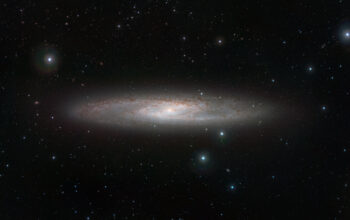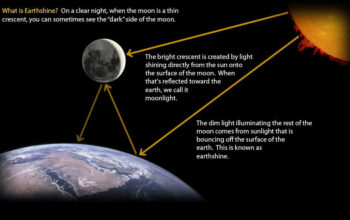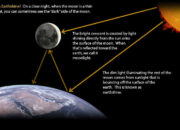Black holes, enigmatic celestial entities, are often regarded as the ultimate conundrums of astrophysics. These regions of spacetime, characterized by gravitational fields so intense that nothing—not even light—can escape, serve as profound reminders of the limits of human understanding and the reach of our cosmic imagination. Their nature challenges the fabric of our reality, imparting an insatiable curiosity about the universe’s unseen realms. In recent years, an unprecedented era of astrophysical investigation has emerged, unveiling the multifaceted aspects of black holes, particularly through the lens of advanced observational technologies. This article endeavors to explore the fascinating intricacies surrounding black holes and the transformative insights offered by modern astronomical techniques.
To comprehend black holes, one must first appreciate the fundamental principles that govern their formation. These gravitational behemoths typically arise from the remnants of massive stars that have undergone gravitational collapse following their nuclear combustion. The convergence of matter in such a catastrophic manner gives rise to a singularity—an infinitely dense point within a black hole—encased by an event horizon, the boundary beyond which escape becomes untenable. It is within this shadowy domain that traditional physics becomes attenuated, necessitating the consideration of both general relativity and quantum mechanics in tandem.
The metaphor of a cosmic abyss aptly epitomizes the nature of black holes. They are not merely voids but rather the ultimate repositories of celestial information, distorting time and space in ways that challenge our perceptions. The notion that an object can disappear into the cosmic night yet exert a profound influence on the surrounding universe provides fertile ground for both scientific inquiry and philosophical contemplation. This paradox fuels our fascination with black holes, whose very existence forces us to reevaluate the parameters of observable reality.
Recent advancements in observational astronomy, particularly with the advent of the Event Horizon Telescope (EHT), have ushered in a new epoch in black hole research. The EHT’s groundbreaking work culminated in the first-ever image of the supermassive black hole at the center of the galaxy M87, illustrating the shadow cast by this titanic entity. This image, akin to a photograph of a ghostly silhouette, confirmed a longstanding hypothesis while simultaneously igniting a flurry of subsequent studies aiming to unravel the complexities of supermassive black holes. It is a testament to the power of modern astrophysics that we can now glimpse into the heart of darkness.
Moreover, black holes are observed to be more than mere voids; they are dynamic entities that play a pivotal role in cosmic evolution. The accretion of matter onto a black hole generates intense radiation, producing staggering jets that extend far beyond their host galaxies. These energetic outflows significantly impact galactic configurations and star formation processes, acting as both a catalyst and a consequence in the cosmic dance of creation and annihilation. They are, in essence, the architects of the universe’s grand design, illuminating the depths of our ignorance regarding cosmic chronology.
The interplay between black holes and their surroundings is further complicated by the idea of Hawking radiation, posited by the theoretical physicist Stephen Hawking in the 1970s. This phenomenon suggests that black holes are not immutable but rather emit radiation due to quantum mechanical effects near the event horizon. The implications of this assertion are profound—should Hawking radiation be verified, it introduces the tantalizing concept that black holes may ultimately evaporate, thereby reshaping our understanding of thermodynamic principles on a cosmic scale. This speculative aspect of black hole taxonomy invites a broader philosophical discourse regarding the nature of infinity and entropy.
In addition to their theoretical implications, black holes have captured the public imagination, serving as symbols of the unknown and the unfathomable. They embody the ultimate adversarial relationship between light and darkness, knowledge and ignorance. As we probe deeper into the mechanisms that govern their existence, we grapple with the existential questions surrounding our place in the universe. The metaphor of the black hole resonates not only within the realm of astrophysics but also wends its way into the human condition—representing the abyss we confront when contemplating our mortality and the mysteries of existence.
In the realm of popular culture, black holes have been appropriated into diverse narratives, ranging from science fiction literature to cinematic portrayals. These representations often exaggerate their properties to instill awe and fear. Yet, amid the dramatization lies an urgent revelation—the exploration of such themes serves to bring abstract scientific principles into the public consciousness, fostering a greater appreciation for the grandeur of the cosmos. The intrigue surrounding black holes compels both academic and non-academic audiences to engage with complex astrophysical concepts, bridging the chasm between obscure science and popular curiosity.
In conclusion, the unveiling of black holes through modern observational techniques signifies a momentous advancement in our understanding of the universe. No longer relegated to fanciful speculation, these gravitational giants reveal fundamental truths about spacetime and the nature of reality itself. As we continue to illuminate the darkest corners of the cosmos, we reaffirm humanity’s insatiable quest for knowledge amid the mysteries that tether us to the stars. The black hole, enigmatic and profound, invites us to ponder the vast, uncharted territories of existence, beckoning each of us to grapple with the paradox of knowledge arising from the inherent darkness of the universe.










